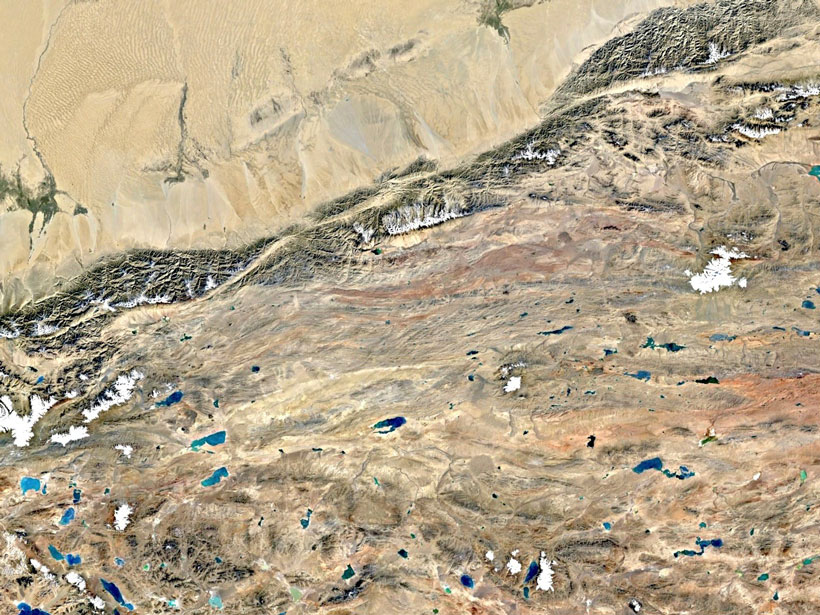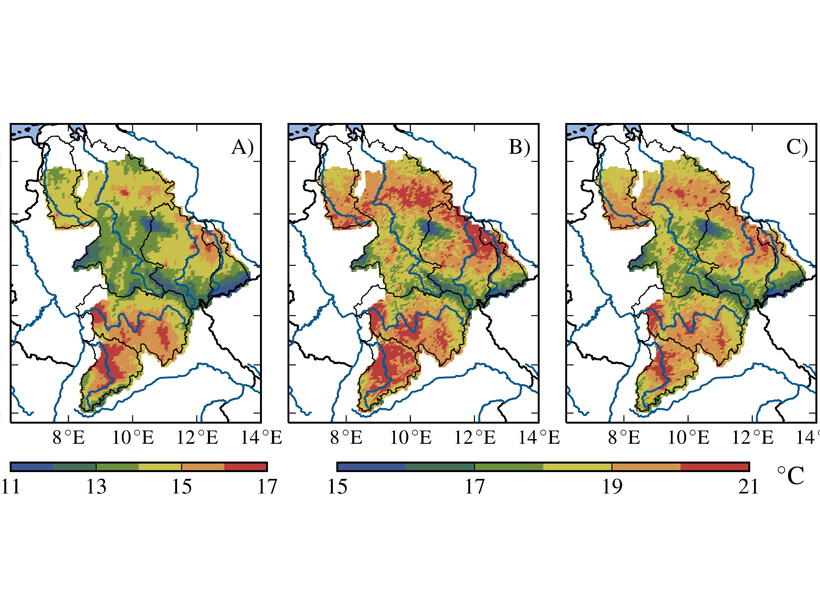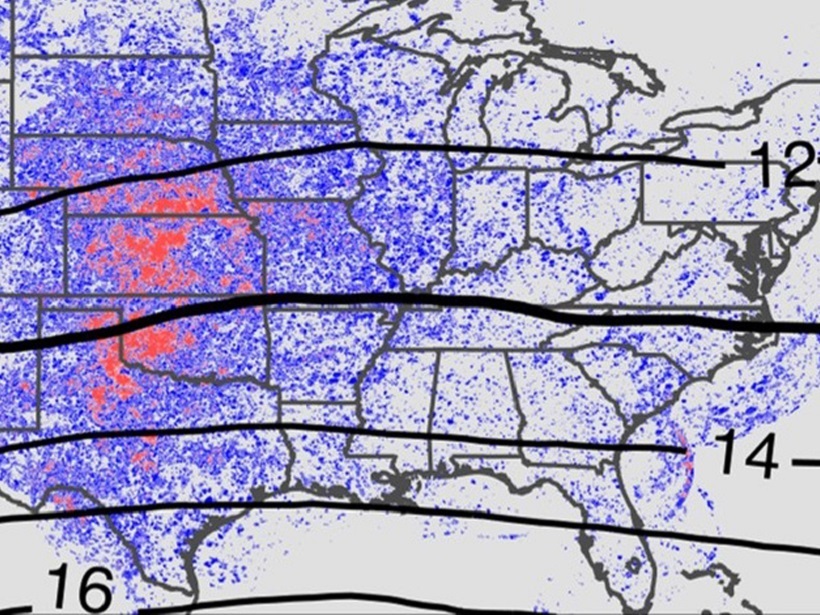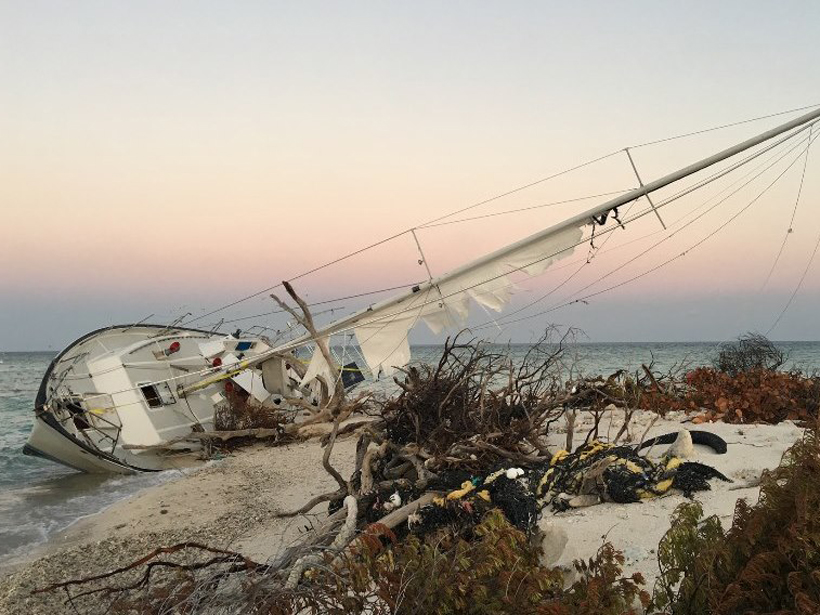A new surface velocity map shows strain localized along major strike-slip features, suggesting the central Tibetan Plateau is not deforming as a fluid in response to gravitational collapse.
remote sensing
Satellite Data Archives Reveal Unrecorded Himalayan Floods
Almost 30 years’ worth of Landsat observations created a comprehensive inventory of catastrophic floods caused by glacial lakes bursting through their rock dams.
Calibrating Hydrological Models by Satellite
Hydrological models are usually calibrated using observations of streamflow, but a new method uses remotely sensed land surface temperature for this purpose.
Interactive Online Maps Make Satellite Ocean Data Accessible
A new online resource from the National Oceanic and Atmospheric Administration provides an interactive view of global satellite ocean color and true-color imagery.
Snowfall Rates from Satellite Data Help Weather Forecasters
A new data product calculates snowfall rates from weather data beamed directly from several satellites, helping meteorologists provide fast, accurate weather reports and forecasts.
Peering Beneath the Powder: Using Radar to Understand Avalanches
High-resolution radar images from Switzerland’s experimental test site show that snow temperature is a key factor in classifying avalanche behavior.
Satellites and Cell Phones Form a Cholera Early-Warning System
A new initiative combines satellite data with ground observations to assess and predict the risk of cholera outbreaks in Bangladesh’s vulnerable populations.
Continental Convection Reaches New Highs
Ten years of high-resolution gridded NEXRAD radar data provide a new data set to quantify tropopause-overshooting convection over the continental United States.
Toward a Satellite-Based Monitoring System for Water Quality
Water Quality Workshop for End Users; Greenbelt, Maryland, 27 September 2017
Measuring Hurricane Wind Speed from Space
A new technique based on GPS signals could provide better wind speed measurements during hurricanes and cyclones.










